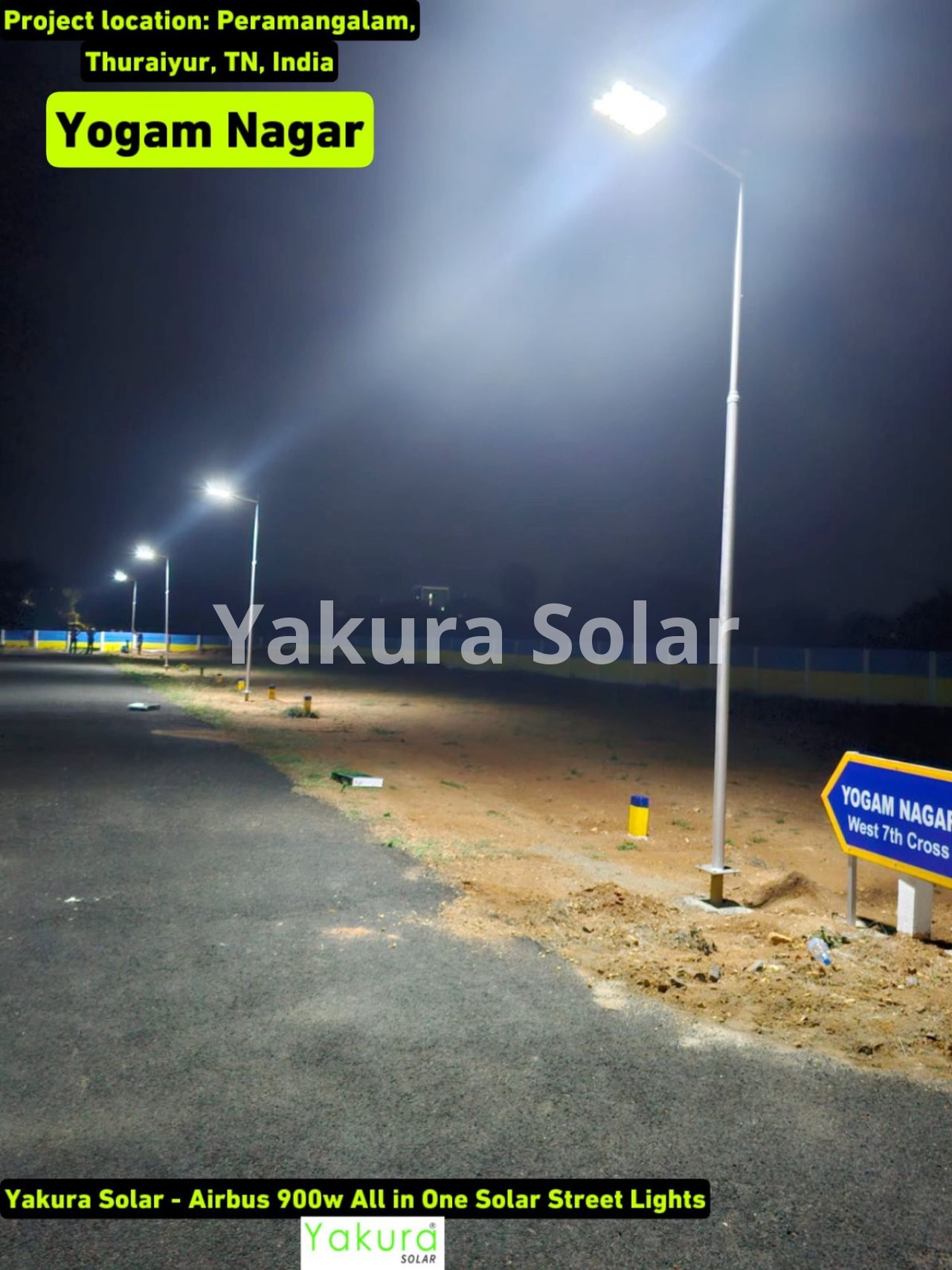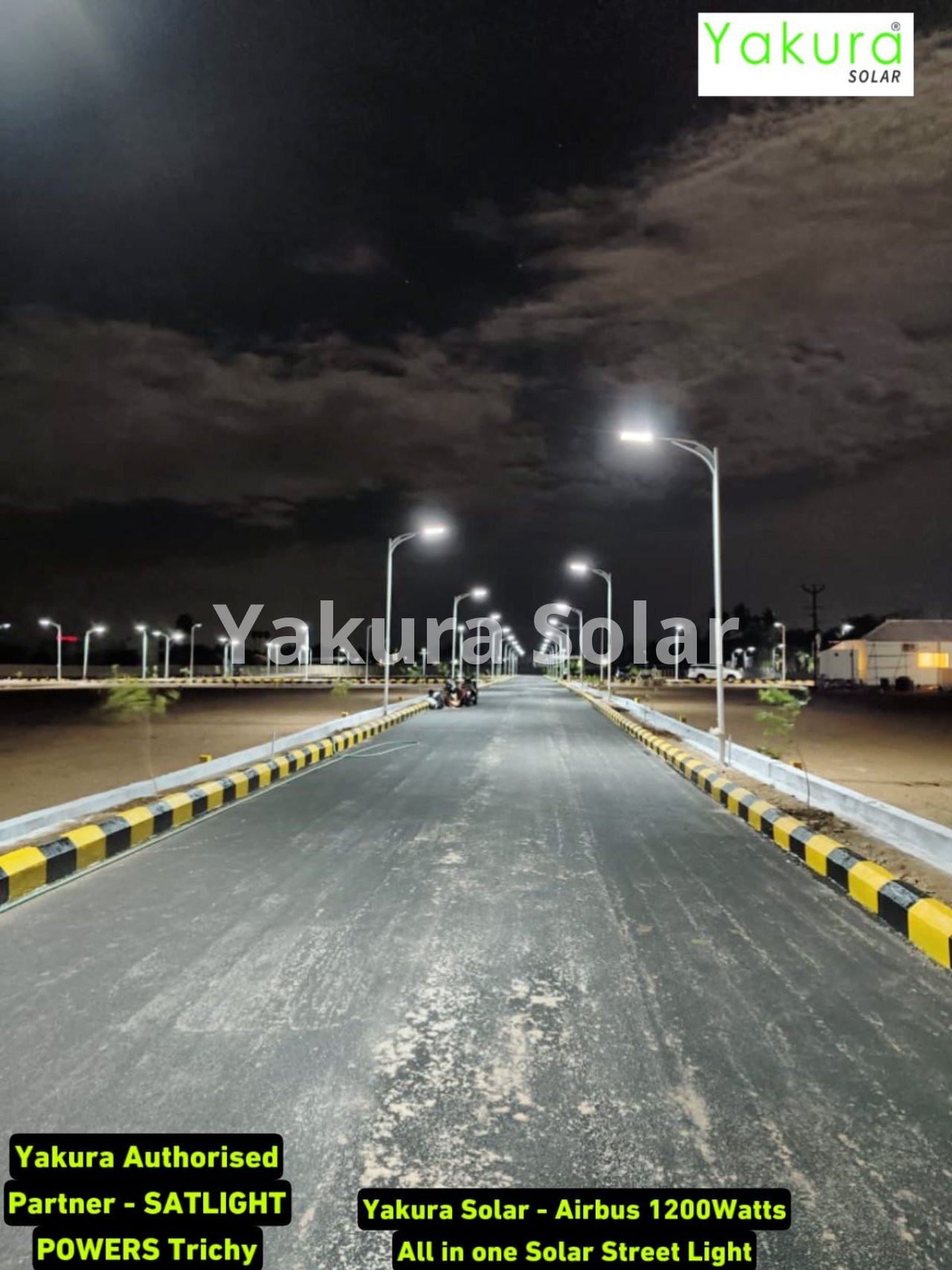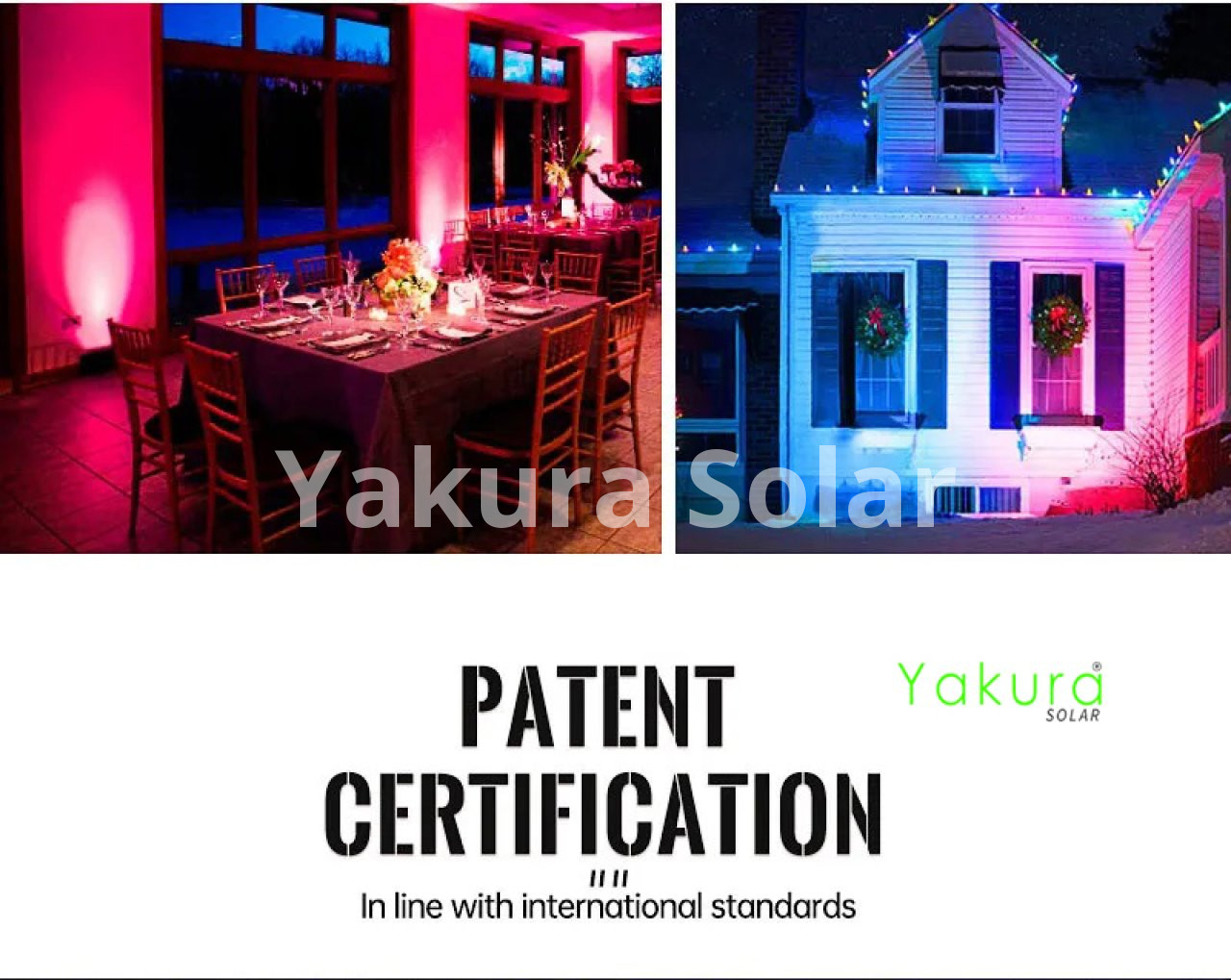Solar Street Light in Tirur

Yakura Solar Street Light
Solar lights harness the power of sunlight to generate and store energy, which is then used to illuminate outdoor spaces. Here are some common uses of solar lights:

-
Outdoor Lighting: Solar lights are widely used for outdoor lighting purposes, such as illuminating pathways, driveways, gardens, patios, decks, and landscape features. They provide a sustainable and cost-effective alternative to traditional electric lighting.
-
Security Lighting: Solar-powered security lights are commonly installed to enhance safety and security around homes, buildings, and other properties. These lights use motion sensors to detect movement and provide illumination, helping deter potential intruders.

-
Street Lighting: Solar street lights are increasingly used in urban and rural areas to provide lighting on public streets, highways, parking lots, and other outdoor spaces. They eliminate the need for complex electrical infrastructure and reduce energy consumption and maintenance costs.
-
Camping and Outdoor Activities: Solar-powered lanterns, flashlights, and portable lights are popular among campers, hikers, and outdoor enthusiasts. These compact and lightweight solar lights are convenient for off-grid lighting during nighttime adventures.
- Decorative Lighting: Solar lights come in various shapes, sizes, and designs, making them ideal for decorative purposes. They can be used to create ambiance in outdoor spaces, such as string lights for parties, lanterns for garden decor, or decorative solar-powered figurines.
-
Emergency Lighting: Solar-powered emergency lights are valuable during power outages or emergencies. They provide a reliable source of light when traditional power sources are unavailable, ensuring visibility and safety in critical situations.
Solar lights offer several advantages, including reduced electricity bills, eco-friendliness, ease of installation (no wiring required), and low maintenance requirements. However, it's important to note that solar lights may have limitations in areas with limited sunlight or during prolonged cloudy periods.


